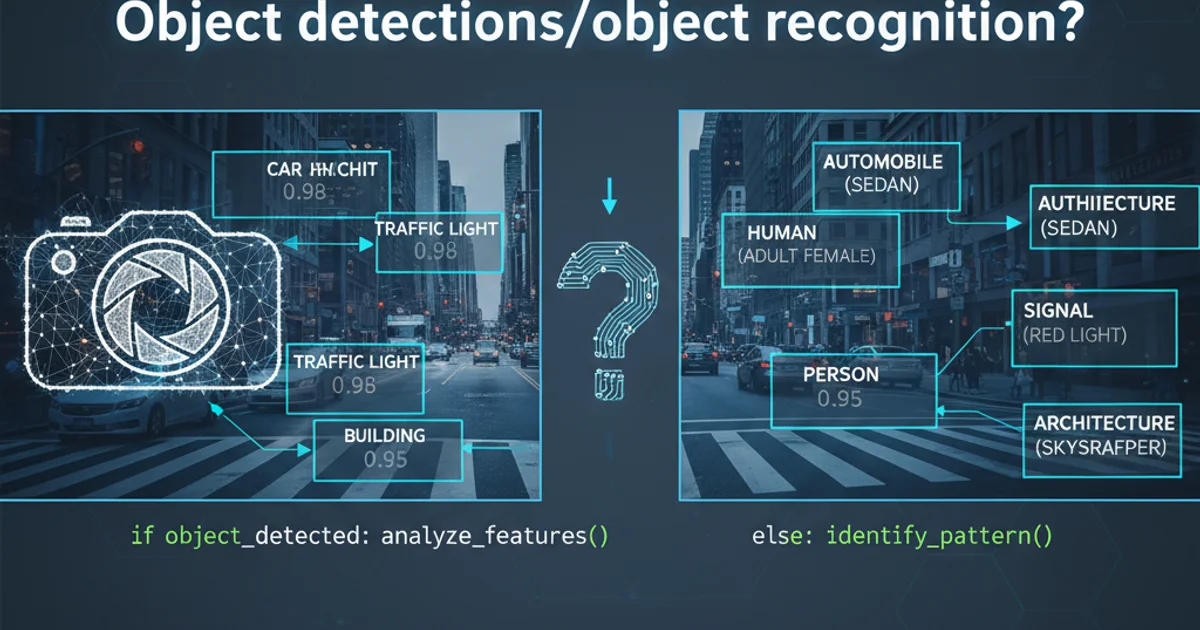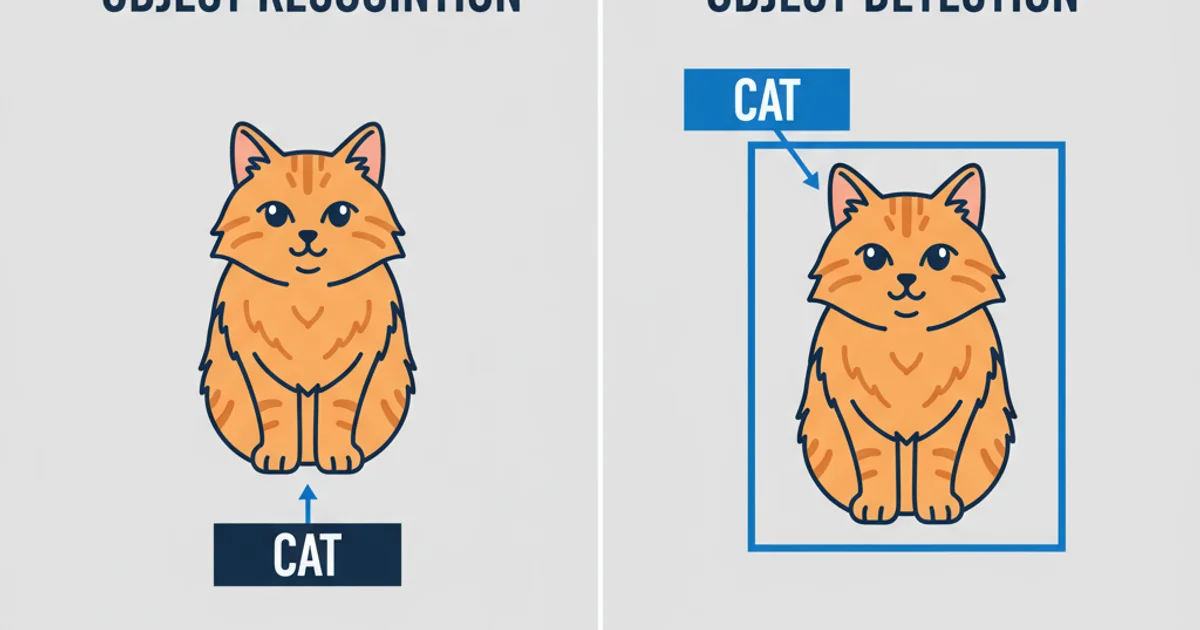Object detections/object recogntion?
Categories:
Object Detection vs. Object Recognition: Understanding the Nuances

Explore the fundamental differences, applications, and techniques behind object detection and object recognition in computer vision.
In the rapidly evolving field of computer vision, the terms 'object detection' and 'object recognition' are often used interchangeably, leading to confusion. While closely related, they represent distinct tasks with different objectives and methodologies. Understanding these differences is crucial for anyone working with image processing, machine learning, or developing AI applications that interact with the visual world. This article will demystify these concepts, highlight their unique contributions, and provide insights into their practical applications.
What is Object Recognition?
Object recognition, at its core, is about identifying what an object is. Given an image or a region of an image, the goal is to classify it into a predefined category. This task typically assumes that the object's location is already known or that the entire image contains a single object of interest. It's a classification problem where the output is a label (e.g., 'cat', 'dog', 'car'). Early approaches often involved feature extraction (like SIFT or HOG) followed by a classifier (like SVM). Modern object recognition heavily relies on Convolutional Neural Networks (CNNs) for their superior feature learning capabilities.
flowchart TD
A[Input Image] --> B{Feature Extraction (e.g., CNN)};
B --> C{Classification Model (e.g., Softmax)};
C --> D[Output: Object Label];
style A fill:#f9f,stroke:#333,stroke-width:2px
style D fill:#bbf,stroke:#333,stroke-width:2pxBasic workflow for object recognition (classification)
What is Object Detection?
Object detection takes object recognition a step further by not only identifying what an object is but also where it is located within an image. This involves drawing a bounding box around each detected object and assigning a class label to it. Object detection is a more complex task because it combines both classification and localization. It's particularly challenging when dealing with multiple objects of varying sizes, orientations, and occlusions within a single image. Popular object detection algorithms include R-CNN, Fast R-CNN, Faster R-CNN, YOLO (You Only Look Once), and SSD (Single Shot MultiBox Detector).
flowchart TD
A[Input Image] --> B{Region Proposal Network (RPN)};
B --> C{Feature Extraction (e.g., CNN)};
C --> D{Classification & Bounding Box Regression};
D --> E[Output: Object Label + Bounding Box Coordinates];
style A fill:#f9f,stroke:#333,stroke-width:2px
style E fill:#bbf,stroke:#333,stroke-width:2pxSimplified workflow for object detection (e.g., Faster R-CNN)
Key Differences and Relationship
The primary distinction lies in the output: recognition provides a class label, while detection provides both a class label and spatial coordinates (a bounding box). Object detection often incorporates object recognition as a sub-task. For instance, after proposing potential regions of interest, a classifier is used to identify the object within each region. Therefore, object detection can be seen as a more comprehensive task that builds upon the capabilities of object recognition. Both are fundamental to many advanced computer vision applications, from autonomous driving to medical image analysis.

Visualizing the difference: Recognition vs. Detection
Practical Applications
Both object recognition and detection are cornerstones of modern AI. Object recognition is used in simpler classification tasks like image tagging, content moderation, and facial verification (determining if two faces are the same). Object detection, being more robust, powers applications such as:
- Autonomous Vehicles: Identifying pedestrians, other vehicles, traffic signs, and lane markers.
- Security and Surveillance: Detecting intruders, suspicious activities, or unattended luggage.
- Retail Analytics: Tracking customer movement, shelf monitoring, and inventory management.
- Medical Imaging: Locating tumors, anomalies, or specific organs in X-rays or MRI scans.
- Robotics: Enabling robots to perceive and interact with their environment by identifying objects to grasp or avoid.
import cv2
import numpy as np
# This is a simplified conceptual example. Real-world detection uses complex models.
def simple_object_detection(image_path, target_object_color_range):
img = cv2.imread(image_path)
if img is None:
print("Error: Could not load image.")
return
hsv = cv2.cvtColor(img, cv2.COLOR_BGR2HSV)
# Create a mask for the target color
mask = cv2.inRange(hsv, target_object_color_range[0], target_object_color_range[1])
# Find contours in the mask
contours, _ = cv2.findContours(mask, cv2.RETR_EXTERNAL, cv2.CHAIN_APPROX_SIMPLE)
detected_objects = []
for contour in contours:
area = cv2.contourArea(contour)
if area > 100: # Filter small noise
x, y, w, h = cv2.boundingRect(contour)
detected_objects.append({
"label": "Detected Object", # In real detection, this would be classified
"bbox": (x, y, w, h)
})
cv2.rectangle(img, (x, y), (x + w, y + h), (0, 255, 0), 2)
cv2.imshow("Detected Objects", img)
cv2.waitKey(0)
cv2.destroyAllWindows()
return detected_objects
# Example usage (detecting a generic 'blue' object)
# Lower and upper bounds for blue color in HSV
# blue_lower = np.array([100, 150, 0])
# blue_upper = np.array([140, 255, 255])
# simple_object_detection("path/to/your/image.jpg", (blue_lower, blue_upper))
print("This code snippet demonstrates a very basic color-based 'detection' concept.")
print("Actual object detection models (like YOLO, SSD) use deep learning for robust feature extraction and classification.")
A conceptual Python snippet for basic color-based 'detection' to illustrate localization. Real object detection uses deep learning models.